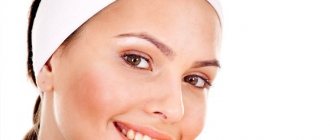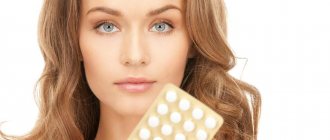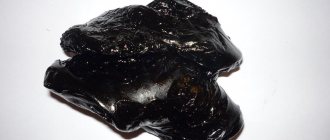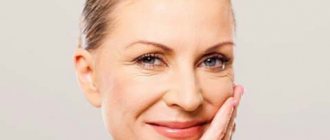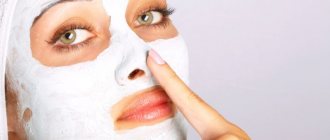Since ancient times, the mysterious and alluring image of an oriental beauty has excited the imagination of writers and poets, prompting them to immortalize it in the immortal works of world classics. The slender, flexible “Scheherazade” with a chiseled face of alabaster pallor, deep almond-shaped eyes and luxurious silk of blue-black hair has been considered for centuries a symbol of charm, sexuality and seduction - after all, it was there, under the dark velvet of the southern night, that the ancient art of love, sensuality and passion was born. The ideal combination of body contouring and music, a special diet, cosmetics and incense became the tool of an experienced enchantress - for the first time, it was the eastern heirs of Armida’s talents who began to use the healing power of nature to create an ideal image.
And today we will continue our acquaintance with the secrets of oriental cosmetology. So, in one of the previous articles we talked about the benefits of turmeric for whitening the face and fighting skin rashes, here we will consider another magical remedy from the arsenal of southern beauties - Lawsonia, popularly known as henna.
What is henna and what are its beneficial properties?
Henna is a unique healing remedy that is obtained from various parts of a tropical plant with the melodious name Lawsonia. In appearance, this shrub is somewhat reminiscent of the familiar lilac, only it smells fragrant at night, and blooms for quite a long time - with white or pink inflorescences.
Based on the intensity of the coloring pigment, there are several varieties of henna, which is extracted from various parts of the plant:
- Powder from young leaves from the upper branches of Lawsonia is the strongest dye - it is used for coloring textiles and mehndi;
- The remaining leaves of the plant are used to make natural hair dye;
- The stems of the bush do not have coloring properties - healing colorless henna is obtained from them;
- And Lawsonia flowers are used to produce excellent essential oil.
In addition, all parts of the plant are suitable for creating medicines, and henna treatment has been practiced in folk medicine for several thousand years. So, according to legend, even the Prophet Muhammad recommended it as a blessed, healing and natural remedy beneficial for the spirit and body.
“Whatever (cut or stabbed) wound befell the Prophet, he would always apply henna to it.”
Treatment of skin and hair with Lawsonia powder was also practiced in Ancient Egypt, where a favorite pastime of noble ladies was applying henna designs to the body and nails (which served not only as a “tribute to fashion”, but also saved from bacterial, fungal and parasitic diseases).
As for the territory of distribution, Indian henna, obtained from plants from plantations in Rajasthan, is considered the most valuable. Other regions of India - Madhya Pradesh, Gujarat and Maharashtra - also supply quality products to the world market, but Iranian henna does not receive the best reviews from cosmetologists.
I will demonstrate the changes henna makes on my hair.
This is a BEFORE photo.
Here the hair is bleached along the length. The henna was bleached. Base: yellow hair.
_____________________________________________________________________________________________
Here the base is once colored with Indian henna.
Result: transformation of yellow hair into fiery hair.
_____________________________________________________________________________________________
Subsequent dyeing caused the henna to begin to fade into darkness.
_____________________________________________________________________________________________
And another coloring practically erased the boundary between bleached and unbleached hair, turning me from a red-haired beauty into a burning brown-haired woman.
Here you can see how the dark hair has an obvious redness, but this is only a small part of the tints that can be conveyed through a photo.
The transformation of light shades into bright ones followed by darkening is perfectly presented in my photos. I think, looking at this transformation, it will now be easy for you to decide on the right number of colors.
Dark shades have another very tasty ability, they go into the violet range with sufficient accumulation of pigment and it looks like this. Look at the top of the hair.
_____________________________________________________________________________________________
Colorless henna for the face - health and youth of your skin
In terms of their pharmacological properties, all types of henna are almost identical, however, in cosmetology for the face, mostly colorless henna is used - of course, unless after the procedure you plan to turn into a mulatto for a couple of weeks.
The powder obtained from carefully dried Lawsonia stems is a storehouse of vitamins and microelements necessary for facial skin. Colorless henna contains:
- Organic acids.
- Tannins (tannins) - eliminate inflammation and oily skin, prevent tissue aging, give the face freshness and a healthy color.
- Polysaccharides – maintain normal skin turgor, stimulate collagen production.
- Resinous and fatty substances are a natural balm for aging skin.
- Vitamins K, C and P, provitamin A.
- Macro and microelements, traces of essential oil.
Thus, homemade face masks with colorless henna:
- They have cleansing, protective and healing properties.
- They have a beneficial rejuvenating effect and effectively soften the skin of the face and body.
- Protect the skin from the harmful effects of ultraviolet radiation.
- Heal damage and inflammation, have a pronounced disinfectant, antibacterial and antifungal effect.
- Reduces sebum production, tightens pores and tightens facial contours.
The use of a basic monocomponent recipe for a face mask made from colorless henna successfully helps fight most skin problems:
- eliminates itching and skin irritation;
- help treat acne, pimples and dermatitis;
- deeply cleanses and normalizes the water balance of the skin;
- reduces the appearance of age-related changes in the skin, smoothes out facial wrinkles;
- improves complexion, heals skin microdamages, scars and post-acne marks.
At the same time, colorless henna (like most herbal components) can be successfully combined with other ingredients to enrich the composition and activate additional beneficial properties of a cosmetic mask.
In addition, Lawsonia powder is used to prepare healing baths and body scrubs.
Indications for use
The use of lavsonia applications with various additives is recommended both for women with problem skin and for people with healthy faces as a good preventive measure.
Henna in cosmetology is used for the whole body
The main indications for the use of masks may be the following factors:
- dry or oily skin;
- the presence of pimples and blackheads;
- wrinkled and tired dermis;
- unhealthy complexion.
Face mask made from colorless henna - step-by-step master class
The basic recipe for use at home is a mono-composition of henna powder diluted with warm water.
So, we need:
- Colorless henna;
- Pure spring or filtered water.
To work with ingredients, it is best to use porcelain dishes and a wooden spatula.
To prepare a mask according to the classic recipe, you need to pour one tablespoon of henna with approximately the same amount of hot water and stir until the consistency of thick sour cream.
After the composition has cooled a little, feel free to apply it to your face - for this you can use a special cosmetic brush, sponge or cotton swab.
Expert opinion
Svirid Nadezhda Yurievna
Cosmetologist, 5 years of experience
Important! Before starting any cosmetic procedure, you should first prepare your facial skin - clean the skin of cosmetics and impurities, lightly massage and hold your face over hot steam. This promotes better penetration of the healing components of the mask into the deep layers of the dermis.
Relax with the mask on your face for 15-20 minutes.
Contraindications
The ingredient is a herbal product with biologically active components, therefore, when used in facial applications there are a number of contraindications. First of all, this is an individual allergic reaction to the plant and its constituent substances. Therefore, before using the mask it is very important to do a test.
Be sure to check the reaction to all components of the masks separately to exclude the allergen from your care. If redness and itching occur, then you are allergic to this component.
If there are large inflammations, wounds, or burns on the face, any procedures involving the application of cosmetics to the dermis are canceled. High temperature, severe chronic disease in the acute phase or oncology are necessarily contraindications.
Henna applications should be used with caution by women with very dry skin. This plant dries out the skin, so you need to add natural oils to the mask mixture.
Real reviews about a mask with colorless henna
A mask made from colorless henna powder is useful for cleansing the skin, treating acne, blackheads and dermatitis.
Its use is indicated for deep nutrition and lifting of the skin - because, thanks to its antioxidant properties, it has a noticeable rejuvenating effect. The finished mask has a pleasant herbaceous smell, tingles slightly, and has a noticeable tightening effect. It is better to wash it off first with warm and then with cool water. After the procedure, the skin tone is evened out and the face feels fresher.
Nourishing masks for dry and aging skin
By itself, colorless henna has a pronounced drying and astringent effect on the skin of the face. Therefore, to obtain a softening and nourishing composition, you can add any of the following ingredients to the basic recipe:
- Olive oil (1 tbsp);
- Homemade sour cream or fresh cream (1 tbsp);
- Coconut oil (0.5-1 tbsp);
- Oily vitamin A (1 capsule);
- A few drops of your favorite essential oil.
Exposure time is 20-25 minutes.
Harm, side effects
Thanks to its natural composition, colorless henna is safe for hair health. However, allergic manifestations are possible due to individual intolerance. To find out, you need to do a classic test. Prepare a little mixture and apply it to the crook of your elbow. If after 15 minutes irritation or itching appears in this area, then it is better to refrain from using henna masks.
Also, you should not apply the product to your hair very often and alternate with other masks. For dry curls, once a month is enough, for oily curls - 2 times. Otherwise, your hair may dry out. When diluting the paste, it is better to add a teaspoon of vegetable oil (sesame, argan, broccoli, flaxseed). The oil will help prevent dryness.
Purifying masks for blackheads
White clay, tea tree oil, fresh lemon juice, soda, egg whites, honey and herbal remedies help fight excess oily skin and sebaceous plugs.
Oriental scrub with coffee for face and body
You will need 2 tablespoons:
- Oatmeal;
- Coffee;
- White henna powder;
- Heavy homemade cream (depending on the fat content, it may require up to 3-4 tbsp.)
Mix all ingredients until smooth and apply to clean, steamed skin. During the procedure, it is recommended to do a light massage for a better cleansing effect.
Colorless henna + baking soda for oily skin
To prepare the mask you need to add to the basic recipe:
- 0.5 tsp soda;
- A few drops of almond oil.
Expert opinion
Svirid Nadezhda Yurievna
Cosmetologist, 5 years of experience
Helpful advice: to combat oily shine, acne and rashes on the skin of the face, it is better to use warm decoctions of medicinal herbs - chamomile, calendula, thyme, St. John's wort, coltswort, etc. to dilute henna powder.
The exposure time of the mask is approximately 10 minutes.
Pathogenesis
Since chemicals that sensitize the skin (for example, PPD) are haptens and are characterized by a small value, then in order to form allergic reactions such substances must combine with the protein fraction and form a stable antigenic protein association. Greater chemical reactivity results in a wider range of modified peptides, creating a wider range of potential T cell epitopes and therefore stimulating a broader and stronger T cell response [16].
When applying the paste, most of the PPD enters into an oxidation reaction with atmospheric oxygen or with hydrogen peroxide when treating the application site, and through transcutaneous absorption enters the body in the form of monomeric, dimeric and trimeric oxidation products, such as benzoquinone, benzoquinonediamine and paraphenylenediamine, which are subsequently converted to brown dye, or Bandrovsky base (BB) [17]. These oxidation products interact with proteins, such as human serum albumin (HSA), forming the PPD-HSA antigen conjugate. The antigenic complex is recognized by dendritic cells (Langerhans cells) and transported to regional lymph nodes, where this complex is presented to T lymphocytes [16].
The PPD-HSA complex changes the structure of the V and J segments of the α
and
β
chains of the T-cell receptor (TCR) of lymphocytes and induces the expansion of T cells with altered TCR [18]. CD4+ and CD8+ T cells interact with dendritic cells and keratinocytes, thereby initiating the inflammatory cascade. A delayed type hypersensitivity reaction occurs (type IV allergic reactions) [16].
It is worth noting that a high concentration of PPD does not allow the formation of antigenic complexes, but induces the generation of reactive oxygen species in skin cells, which also contributes to the clinical picture of allergic dermatitis [19].
The sensitization of the body is also influenced by the concentration of the sensitizing substance and the duration of its contact with the skin.
An increase in the allergic reaction is also observed in cases where tattoo artists use special syringes to apply paint, thereby further injuring the skin. Retouching a tattoo (reapplying ink after a certain period of time) can also contribute to the development of an allergic reaction due to repeated exposure to the allergen.
Applying an occlusive dressing applicator to the surface of the pattern after the session to fix the paste on the skin enhances the penetration of the chemical agent and promotes stronger sensitization.
Finally, such tattoos are usually applied in the summer season or on vacation in hot countries, on warm and moist skin, which has a higher absorption capacity, which also affects the speed and severity of the allergic reaction [20].
Whitening masks for freckles and pigmentation
Of the natural ingredients that have a pronounced whitening effect:
- Freshly squeezed lemon, grapefruit and cucumber juices;
- Strawberries, wild strawberries, red and black currants;
- Horseradish root juice;
- Kefir and sour milk;
- An infusion of parsley, calendula and dandelion leaves.
Mask with henna and kefir to lighten skin
We will need:
- Colorless henna powder 1 tbsp;
- Kefir – about 50 ml;
- Warm water.
We dilute the henna with homemade kefir and add a little warm water until it becomes a soft, homogeneous paste.
Expert opinion
Useful advice from the editor
You will learn other recipes for brightening healing compositions from our selection of recipes for homemade kefir face masks
For a better effect, the water can be replaced with a fresh herbal decoction - in this case, it should be prepared in advance (1.5-2 hours before the cosmetic procedure).
Toning and firming masks for all skin types
And in conclusion, we offer you several universal recipes:
Refreshing anti-aging henna+honey mask
We enrich the basic recipe with a tablespoon of natural honey and apply the mixture to prepared facial skin for 15-20 minutes.
You can also add an egg to the composition:
- Whipped protein until foamy - for skin prone to excessive oiliness and the fight against premature wrinkles;
- Mashed yolk – for additional nutrition and improvement of skin tone.
Instead of warm water, you can use fresh chamomile infusion to prepare the mask.
The healing power of aloe for normal skin
We enrich the basic recipe with aloe juice (it is recommended not to water the agave for a couple of weeks before the procedure) and a couple of drops of essential oil.
Expert opinion
Svirid Nadezhda Yurievna
Cosmetologist, 5 years of experience
Helpful advice! Colorless henna should not leave marks on the face, however, if you come across a not very high-quality product and an “incident” is discovered after the procedure, then you can wash off henna stains from the skin with pure lemon juice.
Who is it recommended for?
Natural henna should not contain any foreign chemical components, so carefully study the information on the packaging.
With this natural gift you can quickly get rid of the following skin problems:
- enlarged pores and oily seborrhea;
- blackheads (comedones);
- all kinds of rashes (acne, pimples, boils);
- age spots, freckles;
- premature aging and fading of the skin surface (with loss of elasticity, appearance of wrinkles, changes in facial contours);
- peeling and signs of irritation of the epidermis;
- fungal infections;
- unhealthy color.
Expert opinion
WE RECOMMEND!
After using compositions with henna, the skin of the face becomes clean, smooth, renewed and elastic, and the oval is noticeably tightened.
